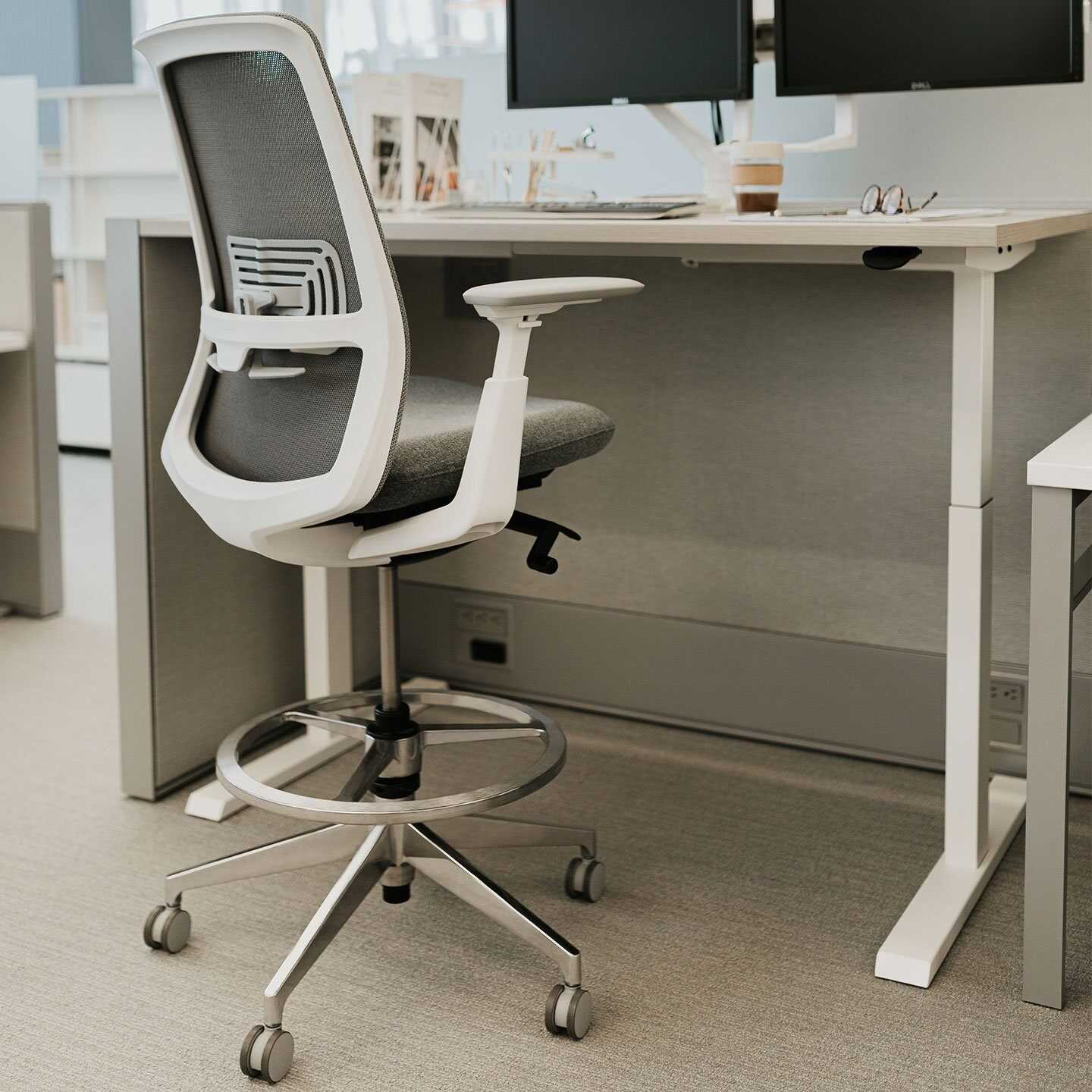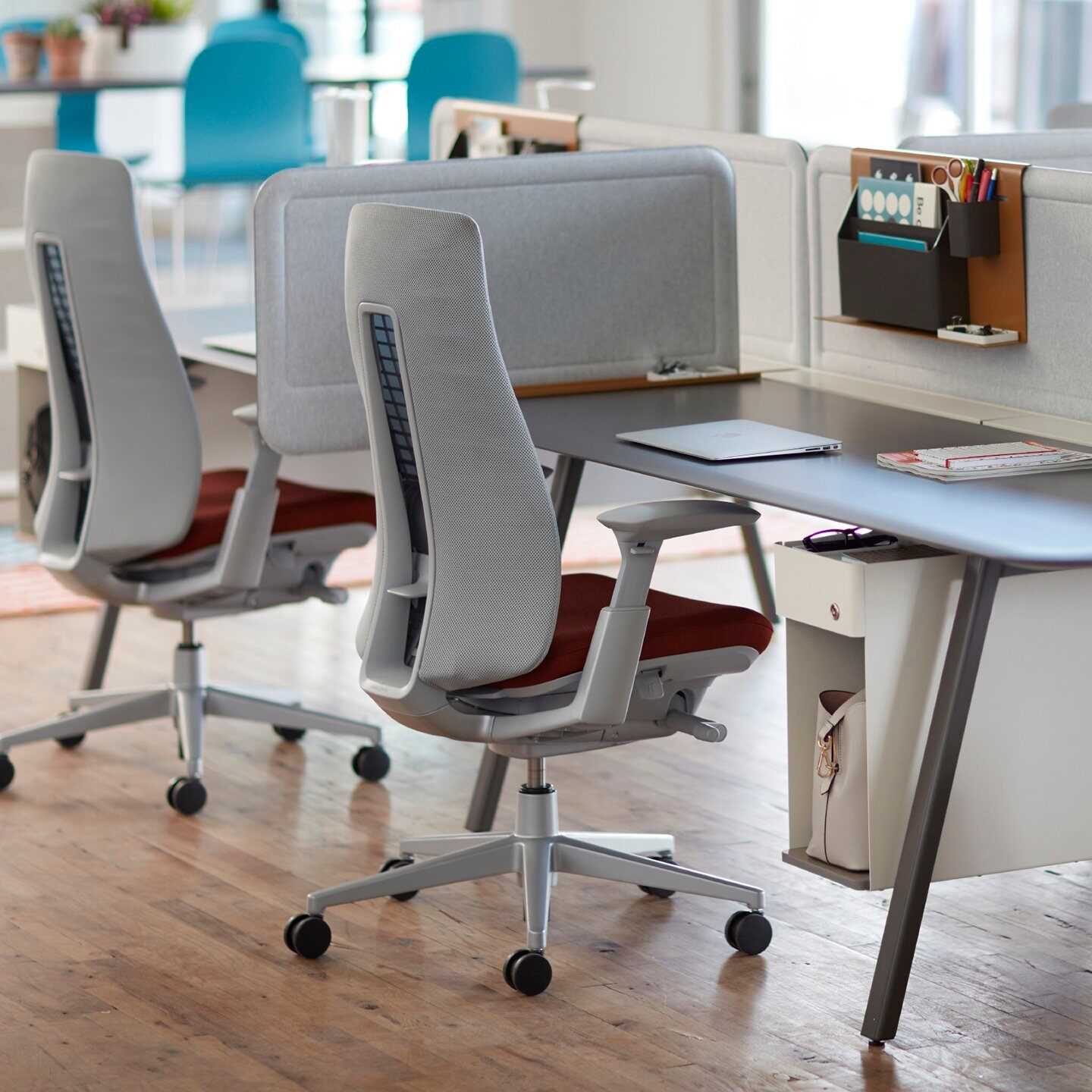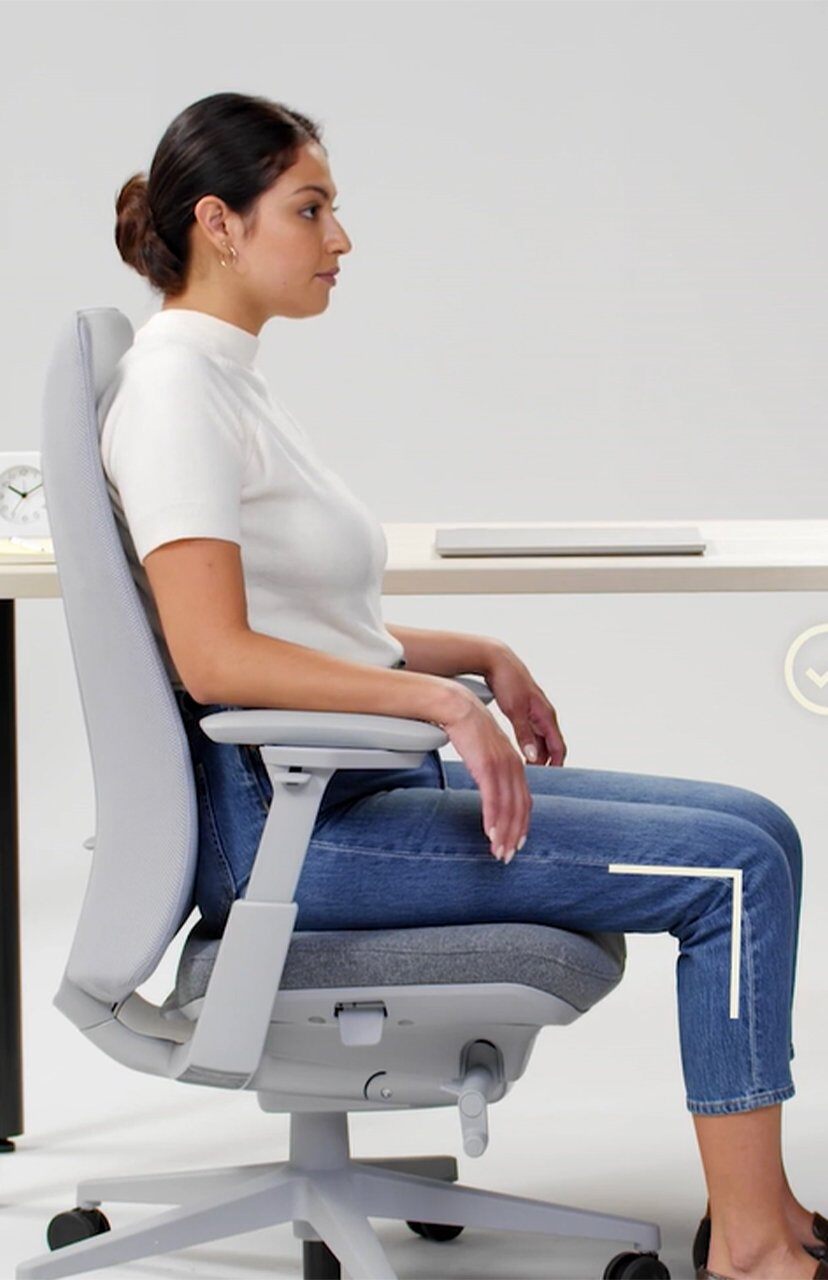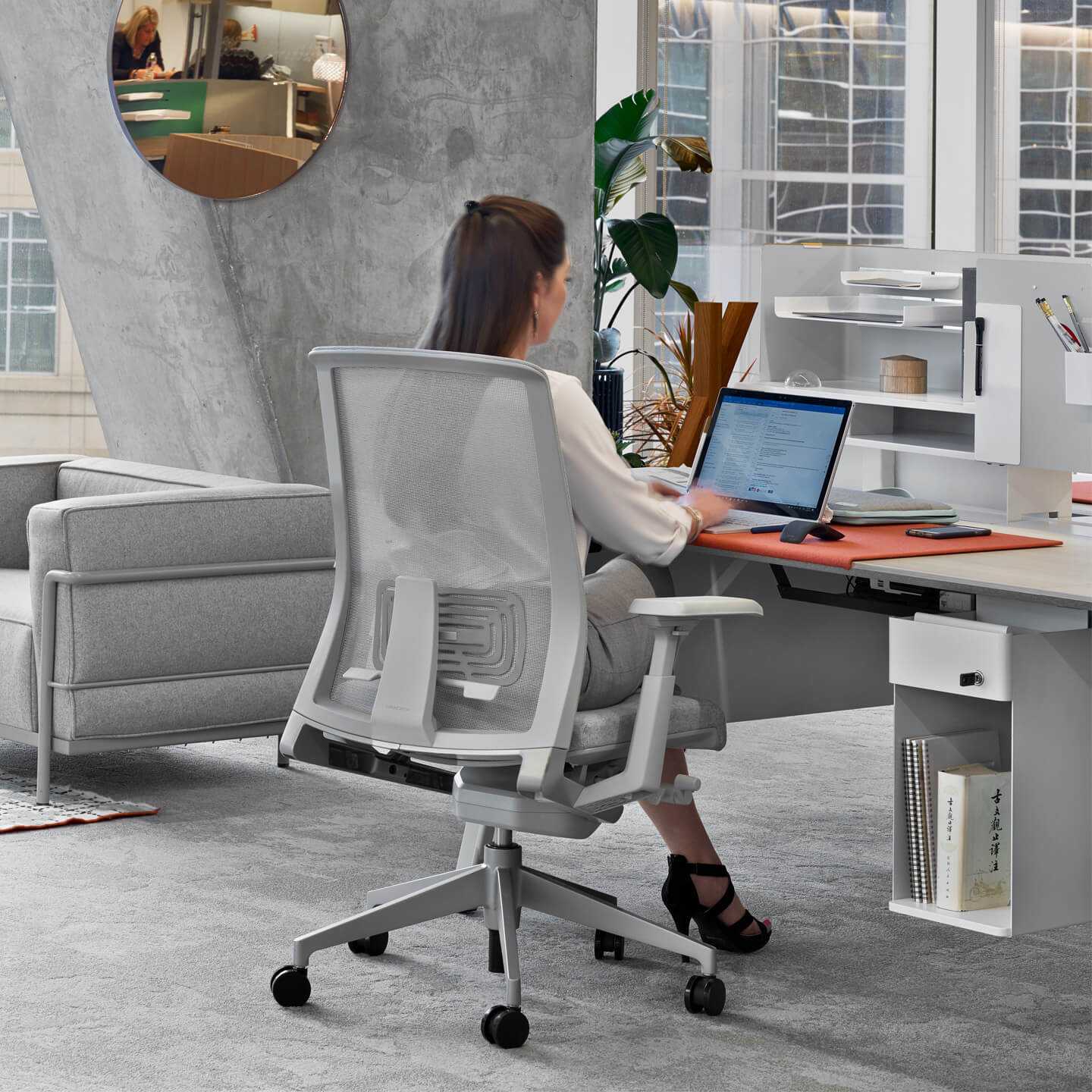Task Seating
There are enough distractions at work—don’t let a a sore back be one of them.
The average office worker spends as much as 1700 hours a year in their task chair, making task chairs arguably the most crucial piece of furniture you purchase for your office. The only piece of furniture that most people interact with more is the mattress on which they sleep. How comfortable is your chair?

What is Task Seating?
Task chairs, or desk chairs as they are often called, are so ubiquitous in the office that many people refer to them as “office chairs.” Task chairs are designed to promote productivity and provide ergonomic support to your body for extended periods throughout the day. Most quality chairs will provide at minimum lumbar support, adjustable armrests and an adjustable height.
Ergonomic Features You Need in Your Task Chair
Task chairs can come loaded with dozens of fancy features or stripped down to the barest essentials. It largely depends on your personal preference and how much you plan on using it. However, there are still a few vital ergonomic features that any task chair worth its salt will have:
- Adjustable armrests
- Adjustable seat height
- Lumbar support
- A comfortable seat
This list is far from exhaustive; there are plenty of other excellent features that could make your life more comfortable at work. For example, some people swear by chairs with a forward tilt mechanism. Others want to change the depth of their chair’s seat pan.
This list will at least ensure you have a quality ergonomic chair. Where you go from there is up to you!

How Much Do Task Chairs Cost?
The cost of a task chair is highly variable. You could conceivably find a product that is called a task chair for less than $100 online. Alternatively, you could find a premium chair that also looks like a task chair but costs more than $2000.
Ultimately, what most businesses expect when they want to buy a task chair can be purchased for between $450 and $1000. Where you are going to land within that range will depend on several factors:
- Durability and warranty length
- Finish selection
- Features and adjustments

Know When It’s Time to Replace Your Task Chair
Sometimes it’s obvious that you need a new chair, other times it may seem a little more doubtful. Let’s explore the four most important signs that you may (or may not) need a new chair.
1. Damaged or missing parts
This is always the most obvious sign that you are due for an upgrade. If there is visible damage to your chair that prevents it from working the way it should (ex. adjustments that are stuck or missing).
2. Flattened seat cushion
After much use, the cushion of your chair may start to compress or flatten. A flat seat cushion puts more pressure on your lower back and increases your risk of chronic back pain.
3. Improper size
While most task chairs are very adjustable, there are limits to those adjustments. If the armrests on your chair are too far apart for you to use comfortably or the chair height doesn’t allow your feet to rest comfortably on the group, then perhaps your chair was never right for you.
4. It just doesn’t feel right anymore
There is not always a glaring issue with your chair that you can point to, sometimes a chair is not right for you. Listen to your body, and if you are uncomfortable in your chair regardless of how you adjust it, it may be the wrong chair you.
Properly Adjusting a Task Chair
There are a few guidelines to remember when using a task chair. Get the most out of your chair and reduce your risk of ergonomic injury by keeping these in mind.
Rest your arms by appropriately adjusting your armrests. Armrests should be configured to help your elbows rest so that your forearms and upper arms form a 90 to 110-degree angle.
Your chair’s backrest should be positioned so that the lumbar support aligns with the small of your back. Improper support for your lower back can lead to sore muscles and long-term back pain.
Getting your seat height right is critical. Lower the height of your chair until your feet can rest on the floor, with your knees at a 90-degree angle. There should be no pressure on the back of your thighs.
However, your eyes also need to be aligned with your monitor (ideally eye level will be just below the top line of text on your screen). An adjustable monitor arm can help you keep your seat height appropriate without compromising on the position of your monitor.

Ready to Take a New Chair For a Test Drive?
Think you are ready to go beyond reading about a new ergonomic task chair for your office and start deciding which chair is right for you? Having helped thousands of customers find the right task chair for both themselves and their teams, we know that a chair’s specs only go so far. Ultimately it all comes down to comfort.
The best way to judge if you find a chair comfortable is to take it for a test drive.


Prefer to Research and Buy Online?
Well, have we got the resource for you. Our Task Chair Review Guide summarizes the pros, cons and key features of the ten most popular task chairs on the market today. Check it out!

